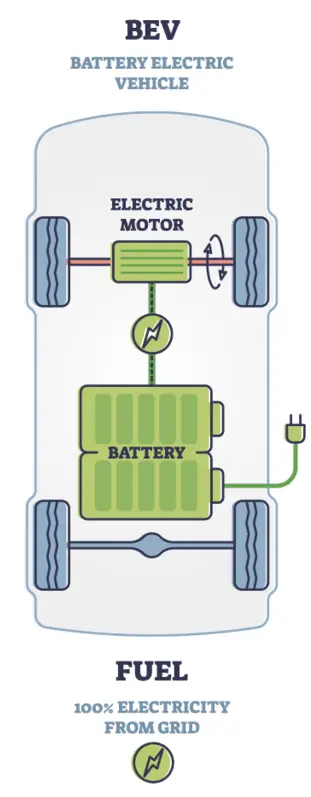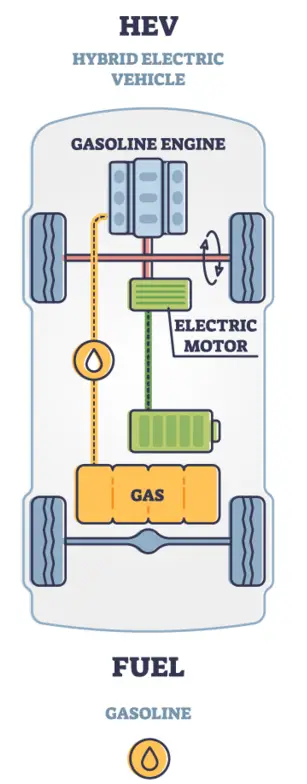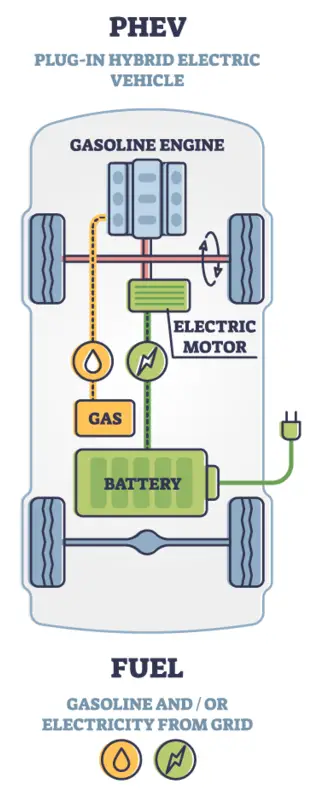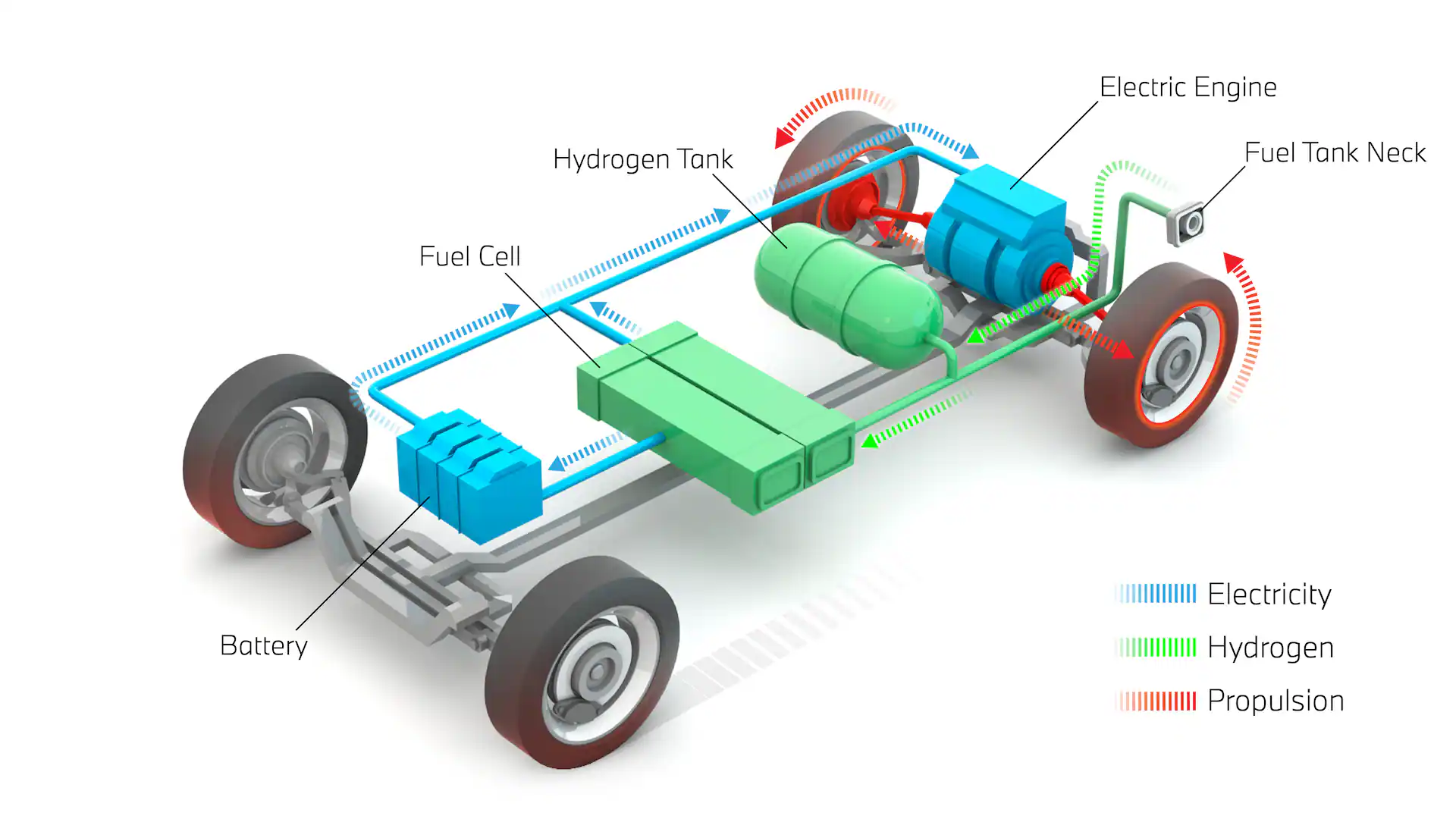The adaptability of electric vehicles is increasing exponentially. Due to the rising fuel cost and to counter the ever-increasing pollution, people are switching to Electrical Vehicles.
However, many of us may not know the Types Of Electric Vehicles available in the market. Due to this lack of knowledge often choose the wrong vehicle and later regret the purchase.
To solve this problem, we have come up with this article where we will be discussing different types of electric vehicles available in the market now in India and how they work.
But before that, it’s better to know the basics of what is an electric vehicle and what is the basic working principle of a typical electric vehicle.
What Is Electric Vehicle?
An electric vehicle converts the electric energy to mechanical energy and thus propels the electric motors that in turn rotates the vehicle wheels.
Since electric vehicles do not burn any fuel, it is considered emission-free vehicles although to produce electricity we may need to burn coal which is again a safety hazard for the environment.
How Does An Electric Vehicle Work?
Here is the basic working principle summary of an electric vehicle.
- The Battery Management System (BMS)/ Battery controller takes the throttle input from the user and accordingly adjusts the electrical energy given to the motor and inverter.
- The motor then converts that electrical energy into mechanical energy and rotates the shaft
- Vehicle wheels are either connected to the motor shaft or through a belt. When the motor shaft rotates, the vehicle wheels also rotate.
Types Of Electric Vehicles
There are four types of electric vehicles available in the market based on how the motor is getting the power.
- Battery Electric Vehicle (BEV)
- Hybrid Electric Vehicle (HEV)
- Plug-In Hybrid Electric Vehicle (PHEV)
- Fuel Cell Electric Vehicle (FCEV)
What Is Battery Electric Vehicle (BEV)
Battery Electric Vehicles are also called All-Electric Vehicles (AEV) as the power is supplied purely by a battery pack. No internal combustion engine is present.
You need to keep on charging the battery pack to run the vehicle. You don’t need any fuel as it does not have an engine. Battery electric vehicles are 100% emission-free vehicles.

Main Components Of Battery Electric Vehicle (BEV)
- Motor
- Battery Pack
- Controller
- Drive Train
- Inverter
Working Principle Of Battery Electric Vehicle (BEV)
- When we press the accelerator, it sends a signal to the controller that modifies the frequency of the AC flowing from the inverter to the motor to regulate the vehicle’s speed.
- The motor rotates the vehicle wheels either through the belt, gear or by directly mounting it.
- When you press the brake, the vehicle starts decelerating, and the motor then acts as an alternator and charges back the battery pack.
What Is Hybrid Electric Vehicle (HEV)
Hybrid electric vehicles have an IC engine and a battery. When the IC engine is running, the battery pack gets charged automatically. When the battery is charged it comes into action and powers the vehicle.
The beauty of a Hybrid Electric Vehicle is that it does not need to be charged using a charger like a typical BEV. The IC engine itself charges the battery. However, the battery pack is usually smaller than a BEV.
You will get better mileage in HEV as the battery is driving the vehicle most of the time. Since you don’t need charging, it can be used as a regular IC engine vehicle too.
There are two types of Hybrid Electric Vehicle available in the market. One is Mild Hybrid Vehicle where the battery size is very small and only used for auxiliary functions like starting/ stopping the engine. Mild hybrid cannot power the vehicle using a battery alone.
The other one is the strong hybrid electric vehicle that comes with a high-capacity battery that can run the car alone without any power from the IC engine.

Main Components Of Hybrid Electric Vehicle (HEV)
- Motor
- Battery Pack
- Controller
- Drive Train
- Inverter
- IC Engine
- Fuel Tank
Working Principle Of Hybrid Electric Vehicle (HEV)
- Like any IC engine, you need to use fuel to power the IC engine.
- Let the engine run your vehicle for some time till it charges the battery
- When sufficiently charged, the battery takes over the IC Engine and powers the vehicle alone.
- When the battery charge goes below a threshold, the IC engine comes back into action and does the same cycle.
What Is Plug-In Hybrid Electric Vehicle (PHEV)
The main difference between PHEV and HEV is that in the case of PHEV, you will get an option to charge the battery separately without any help from the IC engine. If you wish, the IC engine can also charge the battery but you are getting an option to charge the battery pack using a charger.
In Plug-In Electric Vehicles, you will mostly get two modes of operation where in one mode the battery can drive the vehicle alone whereas in another mode, both the battery and the IC use power to drive the vehicle.

Main Components Of Plug-In Hybrid Electric Vehicle (PHEV)
- Motor
- Battery Pack
- Controller
- Drive Train
- Inverter
- IC Engine
- Fuel Tank
- Battery charger
Working Principle Of Plugin Hybrid Electric Vehicle (PHEV)
- PHEV usually starts the car with the battery and runs till the battery range drops to a certain level
- When the battery range drops, the IC engine takes over and runs the car.
- You also get the option to drive the vehicle simultaneously using the battery and the IC engine
- When the IC engine is running, it can charge back the battery, or else you can also charge the battery by connecting it to a wall charger.
What Is Fuel Cell Electric Vehicle (FCEV)
Fuel Cell Electric Vehicles use compressed Hydrogen gas and air to drive a vehicle. The fuel cell converts the chemical energy of hydrogen into the electrical energy that in turn runs the electric motor.
The main component of FCEV is the fuel cell that combines oxygen and hydrogen to generate electricity and power the electric motor.
The battery will be charged by the electricity produced by the fuel cell. However, you need to visit the gas station to fill compressed hydrogen gas regularly. The beauty of FCEV is that it is 100% emission-free as will only get water vapor from the exhaust pipe due to the chemical reaction of hydrogen and oxygen.

Main Components Of Fuel Cell Hybrid Electric Vehicle (FCEV)
- Motor
- Battery Pack
- Controller
- Drive Train
- Inverter
- Fuel cell
- Hydrogen storage tank
Working Principle Of Fuel Cell Hybrid Electric Vehicle (FCEV)
The working principle of FCEV is almost similar to any HEV or PHEV with the only difference being that you don’t have to charge the battery separately nor there is any IC engine to charge the battery. The electricity produced by the fuel cell charges the battery pack.
Conclusion: Types Of Electric Vehicles
Although the demand for electric vehicles is at an all-time high now, many people are still paranoid about the shift due to a lack of charging infrastructure, range anxiety, etc.
Even with the best technology available in the market today, an electrical vehicle takes about a couple of hours to charge, whereas a five-minute visit to a gas station can fill your fuel tank.
The adaptability of electric vehicles will still be in question until there is any breakthrough development in battery technology. Till then, technologies like HEV or FCEV will grow rapidly as you get the flavor of an IC engine and a battery in the same car.
Do you know that electric vehicles can save up to 80% of your fuel cost? Use the electric vehicle savings calculator and find out how much electric vehicles can save for you.